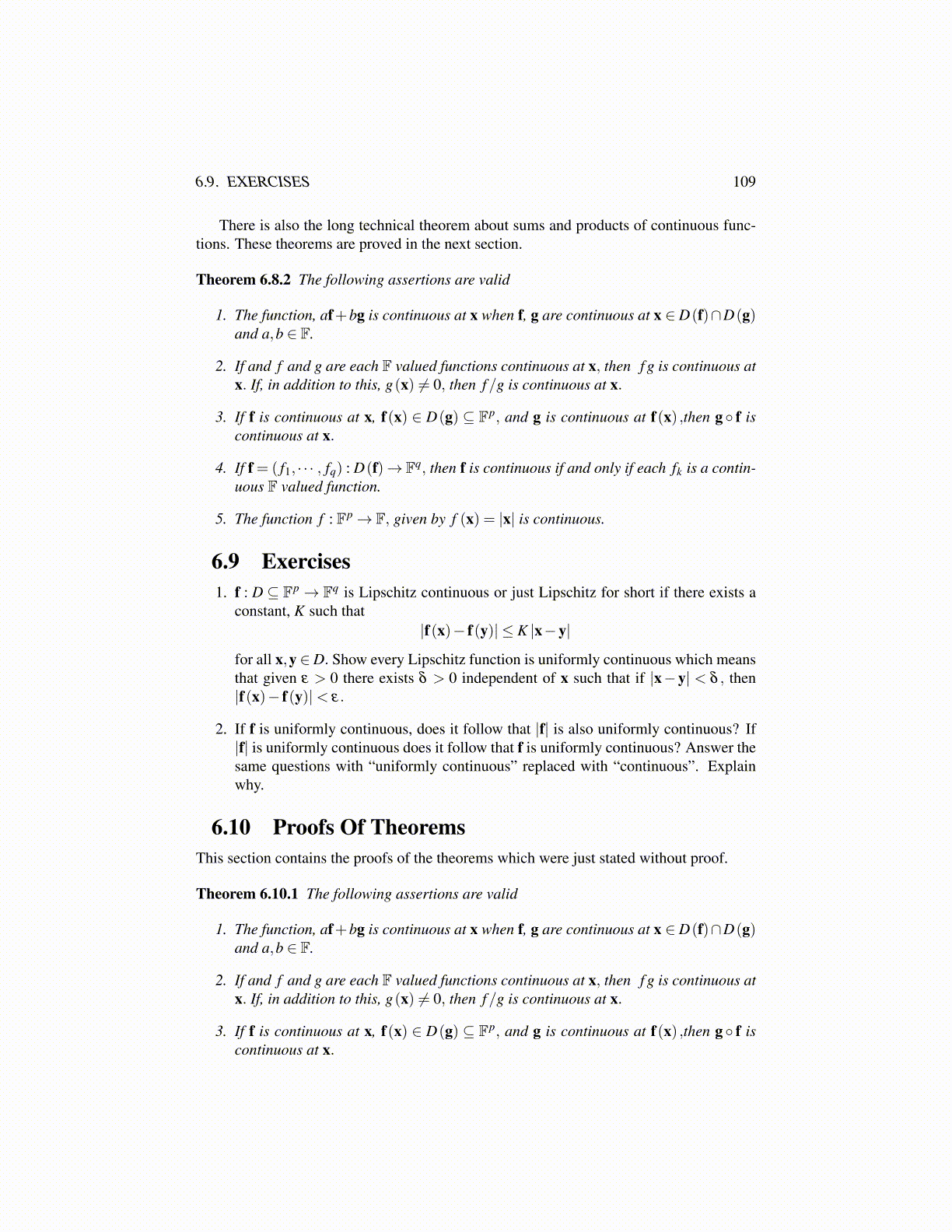
6.9. EXERCISES 109
There is also the long technical theorem about sums and products of continuous func-tions. These theorems are proved in the next section.
Theorem 6.8.2 The following assertions are valid
1. The function, af+bg is continuous at x when f, g are continuous at x ∈D(f)∩D(g)and a,b ∈ F.
2. If and f and g are each F valued functions continuous at x, then f g is continuous atx. If, in addition to this, g(x) ̸= 0, then f/g is continuous at x.
3. If f is continuous at x, f(x) ∈ D(g) ⊆ Fp, and g is continuous at f(x) ,then g ◦ f iscontinuous at x.
4. If f = ( f1, · · · , fq) : D(f)→ Fq, then f is continuous if and only if each fk is a contin-uous F valued function.
5. The function f : Fp→ F, given by f (x) = |x| is continuous.
6.9 Exercises1. f : D ⊆ Fp → Fq is Lipschitz continuous or just Lipschitz for short if there exists a
constant, K such that|f(x)− f(y)| ≤ K |x−y|
for all x,y∈D. Show every Lipschitz function is uniformly continuous which meansthat given ε > 0 there exists δ > 0 independent of x such that if |x−y| < δ , then|f(x)− f(y)|< ε.
2. If f is uniformly continuous, does it follow that |f| is also uniformly continuous? If|f| is uniformly continuous does it follow that f is uniformly continuous? Answer thesame questions with “uniformly continuous” replaced with “continuous”. Explainwhy.
6.10 Proofs Of TheoremsThis section contains the proofs of the theorems which were just stated without proof.
Theorem 6.10.1 The following assertions are valid
1. The function, af+bg is continuous at x when f, g are continuous at x ∈D(f)∩D(g)and a,b ∈ F.
2. If and f and g are each F valued functions continuous at x, then f g is continuous atx. If, in addition to this, g(x) ̸= 0, then f/g is continuous at x.
3. If f is continuous at x, f(x) ∈ D(g) ⊆ Fp, and g is continuous at f(x) ,then g ◦ f iscontinuous at x.